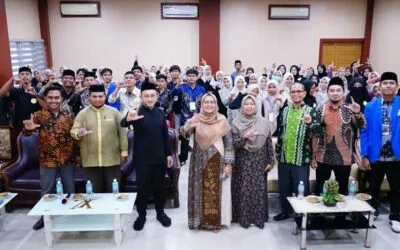
Rencong, also known as Rincong or Rintjoeng, is a treasured cultural symbol in Aceh, Indonesia. It represents bravery, strength, self-defense, and heroism, passed down through generations. According to historical sources, Rencong has been known in Aceh since the early days of the 13th-century Islamic Sultanate.
During the reign of the Aceh Sultanate, Rencong was an inseparable part of almost every Acehnese person’s attire, proudly carried at their waist as a symbol of courage and dignity. It was considered an essential element of Acehnese identity and played a crucial role in their daily lives.
As Aceh emerged as a significant military power in the Malay world, Rencong, along with other weaponry, played a pivotal role. Aceh’s international relations with the Western world influenced the evolution of Rencong designs, drawing inspiration from Turkey and the Indian subcontinent. Rencong shares similarities with the blades used by Turkish soldiers during the Ottoman Empire and the Mughal scimitar. There is even historical evidence of European accounts, such as Dutch sources, referring to Acehnese weaponry dating back to the 14th century.
One popular account suggests that the distinctive shape of Rencong emerged in the 16th century during the reign of Sultan Al Kahar, who had close ties with the Ottoman Turkish Caliphate while seeking assistance to combat the Portuguese.
Rencong knives have a strong connection with Islamic symbolism and the concept of holy war or jihad, symbolizing the fusion of armed strength with unwavering faith in Allah’s power. The Acehnese believed that Rencong possessed mystical powers, leading to the saying, “Tatob ngon reuncong jeuet Ion peu-ubat, nyang saket yang tapansie Haba,” signifying the indomitable strength of the Rencong.
In the past, Rencong played a vital role in the Acehnese struggle against Portuguese and Dutch colonial forces. Rencong was not limited to men; women also wore it as a symbol of their courage and dignity. Legendary figures such as Teungku Umar, Panglima Polem, Laksamana Malahayati, and numerous heroic women like Cut Nyak Dhien and Cut Meutia, to name a few, all wielded Rencong in their battles against foreign invaders.
Rencong also holds deep religious and Islamic symbolism. The hilt of Rencong is often shaped like the Arabic letter “Bismillah,” symbolizing the Acehnese commitment to Islamic teachings.
Over time, Rencong has evolved into different styles, each with its unique characteristics. These styles include Rincong Meucugek, Rincong Pudoi, Rincong Meupucok, Rincong Hulu Puntong, and Rincong Meukure, each with its own distinct features and uses.
As time has passed, Rencong has shifted from being a symbol of power and courage to becoming a cultural artifact, often used as a souvenir or a traditional accessory for special occasions in Acehnese culture, such as weddings.



